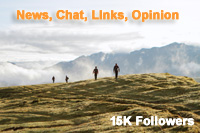The AR World Championships - Costa Rica
How the Race is Going to Work
Rob Howard / 30.11.2013


The race briefing is the main event of the pre-race preparation – everyone is gathered in one huge meeting room and the size of a World Championships race is apparent. All the teams are in their race kit and collect their route books and bibs so the excitement level goes up a notch. It’s time to address the details and find out how things are going to work, what the rules are, and what the course will be.
This time there was limited detail on the course, as it was confirmed the racers will only get their first maps on the start line, and the remaining maps at TA4 and TA8. In fact the first maps will be on top of the teams bike boxes, which they’ll race to from the start line, before assembling their bikes to set off on the first leg.
There was an unusual announcement here. Some teams have bigger bike boxes to allow them to keep pedals and wheels on, but they were told these had to be taken off to make it fair to all. Boxes and bags will be weighed too, to ensure they are within the 35 kilo limit.
Teams were given a sample of the 1;50,000 scale maps being used, and told the maps are waterproof (which was a concern since they won’t have them ahead of the race to waterproof them themselves). The also received a list of penalties and were told who would be on the race jury in the event of a dispute, including one elected racer.
Their race packs did include an overall course map, so teams do know the route, just not in detail, and the organisers ran briefly through the course.
After the first ride the teams are going to kayak in the Golfo Dulce and then cross the Osa Peninsula. The first kayak stage is 65km along the coast, after which comes the 27km crossing of the neck of the peninsula, but this will be made harder as the teams have to carry all of their kayaking gear with them, including portage trolleys.
The kayaks will be moved to the end of the trek for use on the next stage, and teams were told all the kayaks are numbered so they will be keeping the same ones throughout the race. It is a strong incentive to look after them, and not drag them. If they puncture teams will be out of the race unless they can make a repair. At the end of the trek they will need to portage the kayaks 10km to reach the sea.
The 4th stage is a combined kayak & trek (65km) in an area of canals and through the biggest mangrove swamp in Central America. This will be a score orienteering stage, with the checkpoints taken in any order, which might be determined by tidal conditions. All the teams have been given tide timetables and some areas are marked with fish symbols – which means beware of crocodiles. (The race didn’t have a crocodile symbol!)
Then they bike to the ‘mid-camp’ at San Gerado with a stop at the Tirolesa Superman Osa – the world’s longest and fastest zip line (2km long and speeds up to 90mph). The racers will all get a ‘flight’ and if there is a queue the time will be neutralized. It’s not a competitive part of the course, but shows off one of Costa Rica’s main high adrenaline attractions and including it was an opportunity not to be missed.
The 101km ride takes teams to the camp for their 4 hour mandatory stop, where they will be checked over by medics, and will have to write a short race blog, which you can read on the live race website. They will also get the chance to recharge batteries – remember there is 11 hours of darkness in this race.
The following trek will be a key stage of the race, as it covers 92km in the high mountains, starting with an ascent of Chirripo, the highest peak in Costa Rica and including in total over 4000m of ascent. The expected fastest time for this stage is 35 hours and teams will have to take all they need with them. There is nowhere to buy food or stop along the way.
This is where teams will take the La Ruta de los Indios through the tribal highlands. They have been warned it could be cold, and not to underestimate the chilling effect of humidity. Dense fog is a possibility and there are 3 river crossing where they will use ropes – they will be carrying their harnesses.
Following a short ride comes a trekking and guided rafting stage, and then an 89km kayak. At the start of the rafting is the only cut-off in the race, at 2pm on the 9th day of the race. Any teams failing to get through will be moved forward to complete the final two stages.
The transition (T8) to the trekking/rafting/kayaking sections is also a dark zone, and any teams arriving after 2pm will have to wait until 04.30 next morning for daylight to continue. It was this part of the briefing which caused a lot of controversy as the original rule given out was that teams caught in the dark zone would have that time neutralized. It was soon clear many racers were unhappy with this as these teams would have the benefit of a long rest, while those ahead of them would not.
After a lot of discussion the organizers reconsidered and later announced that teams which made it onto the water would have to stop at 05.30pm and camp for the night until the Dark Zone lifted and those held at the transition would not have their time neutralized. The Dark Zone will be strictly enforced using the race trackers and teams were warned the penalty for being on the water late would be disqualification. (They were also told to camp well away from the river, which they have been warned has a lot of crocodiles in it.)
After a short trek at the end of the kayaking comes the longest ride of the race which takes teams up to the border with Nicaragua, then southwards again before the final canopy and rafting sections to the finish.







 SleepMonsters
SleepMonsters



